171 Gundog Standards
RAISING GUNDOG STANDARDS -- WHO'S IN CHARGE?
by David Hancock
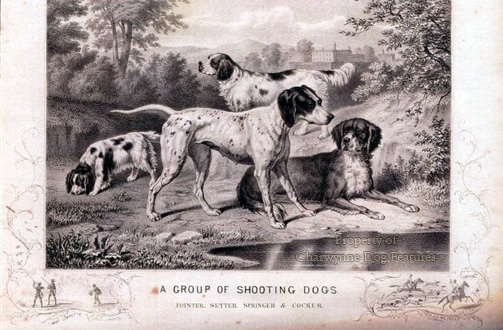 Men who work their gundogs have down the years rarely given a first, let alone a second, glance at the breed standard for their dogs as decreed by the Kennel Club, the custodian of blueprinting in pure-bred dogs. Dogs which have to work can never be judged by appearance or cosmetic appeal. And whilst we all admire a handsome dog, a canine Apollo is no use at all without the right character, temperament and physical endurance. As gundog writer Wilson Stephens once drily remarked on this subject: "They didn't send male models to recapture the Falklands!"
Men who work their gundogs have down the years rarely given a first, let alone a second, glance at the breed standard for their dogs as decreed by the Kennel Club, the custodian of blueprinting in pure-bred dogs. Dogs which have to work can never be judged by appearance or cosmetic appeal. And whilst we all admire a handsome dog, a canine Apollo is no use at all without the right character, temperament and physical endurance. As gundog writer Wilson Stephens once drily remarked on this subject: "They didn't send male models to recapture the Falklands!"
Good looks in the show ring and the conformation of a dog to a written description can never better the right bloodlines, exemplified by performance. Words can of course mean different things to different readers, especially when they are used imprecisely, vaguely or ambiguously. But show-bred dogs, bred to a confusing blueprint, are all too often the first resort of the tyro-sportsman, unfamiliar with the best working bloodlines and unaware of pure-bred cripples winning championship certificates on the conformation show circuit.
Despite close attention from Kennel Club committees the wording of breed standards for gundogs is quite frankly an awful mess and now, with owners of show-bred dogs looking more and more at working tests for their dogs, I believe the time has come for those who work dogs to a high level of field excellence to speak up.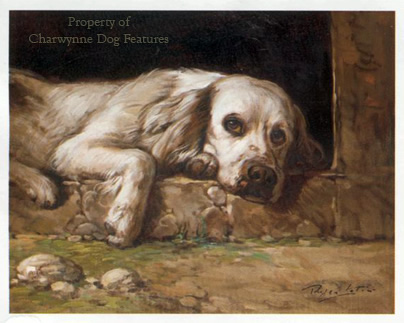
The "let them get on with it" thinking is very understandable; knowledgeable gundog men always know where to get their next dog. But with over 400 inheritable defects already identified, a yawning gap opening up between working and show types in many gundog breeds and a lack of hunting instincts in some highly-popular overbred gundogs, the involvement of experienced, well- informed and, ideally, really "cussed" characters in the future well-being of our precious dogs is now essential.
Look at the Labrador retriever after half a century in the show ring - gone is the soft brown eye, the true yellow colouration, the waterproof coat and the authentic size in so very many specimens. Go and look at "Munden Single" in the Tring museum, no Rottweiler head and bullmastiff physique there. Then turn your attention to the breed standard for the Retriever (Labrador) as published by the Kennel Club.
If you admire dogs for what they can do rather than what they look like, you are struck straightaway by the fact that in the 380-plus words used to lay down the official blueprint for this breed, there is no mention whatsoever of what the dog is actually for, what its function is, what its role in the shooting field consists of. Ability to retrieve is not mentioned. A Labrador retriever can therefore be bred to this design and be incapable of retrieving !
Those of you who use a Labrador or two for picking up do note that, according to its authorised blueprint, your dog must be: "Very active, adaptable, good-tempered and kindly-natured, have a keen love of water and a weather-resistant undercoat", with the tail and coat being the only "distinctive features". Could be a penguin ! There is no mention of stamina, determination, game-finding or ability to withstand icy winds and freezing mud. Our forebears however used significantly different phrases from the KC-approved breed standards to describe their gundogs.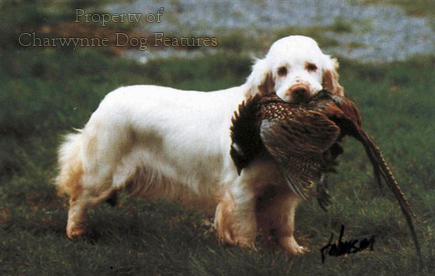
In General Hutchinson's classic "Dog Breaking" published at the turn of the century, he stated that a retriever "ought to have sufficient strength to carry a hare with ease through a thicket...and be able to jump a fence with her...but very heavy dogs are not desirable". He stressed that a thick coat was a prerequisite for a dog expected to "plunge into water after a duck or snipe when the thermometer is near zero". The KC standard states that the Labrador must be "strongly built" with "powerful jaws", a "strong powerful neck" and "broad in skull". No wonder the breed is beginning to look like a member of the mastiff family. The breed undoubtedly has hound blood behind it, but there's quite a difference between say a foxhound and a hunting mastiff. The Labrador was never intended to pull down big game. General Hutchinson's words give me a far clearer idea of what the retriever should be capable of achieving and therefore the construction it needs to succeed.
Very heavy Labrador retrievers of today compare most unfavourably with the prototypal dog "Munden Single" whose preserved form was presented to the Natural History Museum in 1909 by the Hon. A. Holland Hibbert, the leading light in the development of the breed. This bitch can be traced back to the first dogs bred as Labradors by the Earl of Malmesbury. In an article in "Our Dogs" of 1904, she is referred to as the finest Labrador bitch ever seen on or off the bench, the best game finder and steadiest retriever. The big cloddy dogs you see nowadays, especially on the continent and in North America, have lost the true Labrador type. No breed should range so widely between a whippety look and a mastiff appearance; the closer a dog is to the original type then the more likely is he to have the essential characteristics.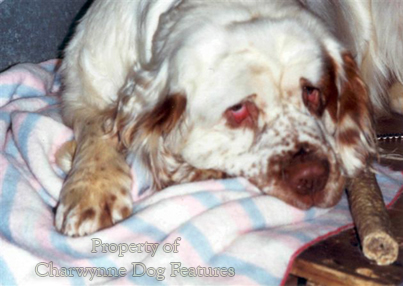
In her book on the breed, Lorna, Countess Howe, stated that the finest attribute in a Labrador should be his temperament and her knowledge of the breed is still unrivalled. The KC standard for the breed makes no such statement and covers that attribute with no more emphasis than in the standard for a lap-dog. The Labrador breed standard uses 44 words to describe the tail and less than half that number to cover temperament. Which is more important in any dog, its tail or its temperament ? Commendably, the breed standard stipulates a soft mouth but I wonder how many exhibitors know what this means and how many judges put it to the test ? Is this attribute in a retrieving breed not so important as to need some verification ?
The breed standard for the English springer ranges from the untrue to the disappointing. This breed is described as being of "ancient and pure origins, oldest of sporting gundogs" which is arrant nonsense. All the spaniels have been interbred and out crossed for centuries and can make no claim to pure origins. At least this standard tells us what the breed was and is for, although I dispute the other claim that it is the oldest of sporting gundog breeds; where is the evidence ? It is disappointing to read the two sentences on temperament and see no mention of key words like determined, staunch, keen to work and stable. I see springers with wild eyes and a nervousness which is highly undesirable. The standard for the breed should list such signs as being serious faults attracting penalty. I can't see what is meant by "gait/movement - strictly his own". There is nothing unique about the way an English springer moves.
Of what value is the extant breed standard of this breed to an enthusiastic young owner or trainer, looking for guidance from the experts of the KC ? Frankly, very little. It would be far better if such a standard consisted of just two elements: firstly, a comprehensive description of what the breed is meant to do, all designs are in response to a stated function; and secondly, a photograph of an outstanding specimen, with arrows indicating why that dog was constructed so soundly. The newcomer to the breed then immediately understands the mental and physical points to look for in his breed. What is the value of phrases in current standards like: medium eyes, jaws strong, body - neither too long nor tooshort, hindlegs well let down, skull of medium length and stifles and hocks moderately bent ? Meaningless imprecise descriptions help no one.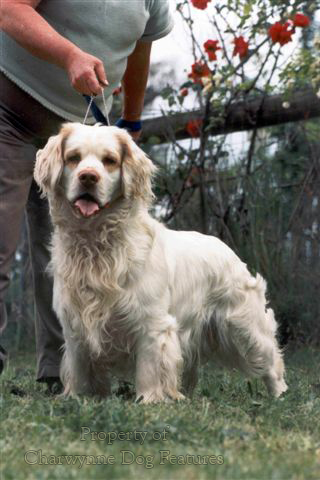
But some words in the gundog breed standards are actually harmful. The eyes of the Clumber are expected to be "slightly sunk, some haw showing..." Why on earth should one spaniel breed only be expected to have eyes that are sunken and show haw ? Sunken eyes, showing haw, should be listed as a serious fault in any breed designed to work. We have Rawdon Lee and fanciers like Farrow, Cowell and Holmes to thank (or blame) for this. That great spaniel expert, C.A.Phillips, was strongly against these words when the breed standard was originally drafted. He rightly argued that the breed was primarily meant for work and such features were not desirable in a working breed. What a pity he didn't win the day. Clumbers' eyes are simply a disgrace nowadays, with eye diseases all too common in this lovely old breed. The Clumber breed standard of today also stipulates an "ideal" weight of 80lbs, with some fanciers arguing for an increase.
"Stonehenge", in his "Dogs of the British Islands" of 1865 gave the Clumber's average weight as 40 to 45lbs. Phillips' "Rivington Pearl", which competed with great success in the field trials of 1903 and 1904, weighed under 60lbs. Why make any working dog heavier than it needs to be to carry out its appointed role ? This is rampant human whim, without good reason or conscience. The Kennel Club is guilty of endorsing such human whim in the Clumber, both over the description of its eyes and its stipulated weight. The Kennel Club was founded to promote dogs not indulge their misguided owners.
But if the standard for the Clumber is regrettable, that of the pointer is a real mess. It mentions the need for speed but not stamina; it demands a dog "well built all over" yet one "lissom in appearance"; the eyes must not be "looking down the nose" and its general outline has to be "a series of graceful curves". Try sketching a dog described like that! In their informative book "The Pointer", Kitty Edmondson and Cicely Robertshaw (Crookrise) produced an excellent couple of pages entitled "The Use of Different Parts of the Anatomy", which is perfect for a new owner striving to become familiar with the reason why a pointer should be constructed in a definite way. They explain very clearly what each part of the dog's anatomy is expected to do. Compared with this, the official breed standard is very poor indeed.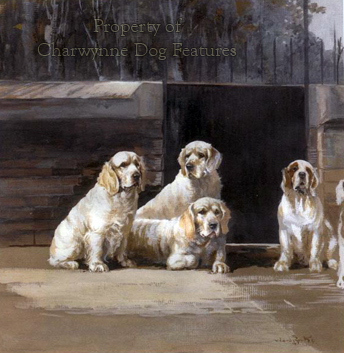
It is easy for gundog men to say: "What does it all matter ? Let the Kennel Club and the 'chalk and trim' fraternity get on with it! There are good dogs at the field trials - forget the rest." That is an avoidance of responsibility. These superb sporting breeds have been handed on to us by master-breeders of previous centuries. We are squandering their life's work. In the show ring unsound dogs are winning and passing on their faults. Bad dogs are not culled nowadays but bred from. We owe it to the likes of Arkwright, Phillips, Knutsford, Boughey, McCarthy, Tweedmouth, Llewellin, Laverack, Humphrey and Lloyd to keep faith and hand on sound working breeds of dog to those who come after us.
A few years ago the working party set up by the KC to identify those parts of the wording of the authorised breed standards which could lead to inheritable abnormalities considered that the requirement for a certain amount of haw in the Clumber's eyes was "definitely encouraging trouble". The breed standard for the Clumber still contains this requirement. A recent survey of hereditary problems in the breed revealed that 36% suffer from entropion (ingrowing eyelashes) and 20% suffer from either poor eyesight or loss of sight. (61% of bitches are afflicted with birth problems too, the result of seeking absurdly overweight dogs). Who's in charge? The current set-up clearly isn't working.
Peter Moxon has written that his first interest in a dog is what it has in the "upper storey" - temperament, intelligence and trainability. And most gundog men would have the same first interest but it must not be the only interest. The wording of breed standards can lead not just to poor eyesight in Clumbers but PRA and clicking hip-joints in retrievers. The attitude of "let them get on with it" from gundog men is a dishonourable soft option. It is desperately important that the blueprint for each gundog breed is drawn up by those who know what they have to do in the field.
Anyone who has studied four-legged animals on the move knows of the crucial role of the upper arm. Yet it is not mentioned in the standards of the pointer, all four retriever breeds and four of the eight spaniel breeds. The English springer spaniel's standard states that the elbows should be "set well to body" but what does that actually mean ? Strangely, the Labrador's standard states that "the forelegs should be straight from the shoulder to the ground, when viewed from either the front or the side". What ever happened to the upper arm ? This wording was authorised and then issued by the Kennel Club; are they competent to do so ? 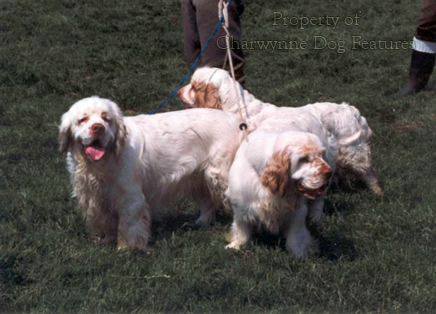
Six of the 25 gundog standards make no comment at all on how these breeds should move, yet that surely is what we want them to do! Pointers and setters perform similar tasks in the field yet each is required to have different shaped bone. The pointer's must be oval, the English setter's has to be rounded, the Gordon's flat and the Irish setter has to make do with bone that is sinewy and straight. The copyright for all standards is held by the Kennel Club. They cannot be reproduced, even by the breed clubs themselves, without Kennel Club permission. The Kennel Club therefore has total control over the standards which lay down the blueprint for all gundog owners and breeders. It is clearly a task which is beyond them and which they do not deserve to retain.
The Kennel Club was set up in the last century by a group of men, good gundog men among them, to promote the best interests of dogs. But look at what has ensued in the gundog breeds: the unsuitable ponderous build and congenital diseases of the Clumber, the wild temperament of the golden cocker, the loss of true type in the Labrador, the loss of the red-gold in the coat of the golden retriever - so much a feature of the early Culham and Guisachan dogs, the degeneration of the show springer into an over-furnished tail-less setter and the loss of a working role for the admirable curly-coated retriever - and judge their success. We now need to replace the Kennel Club with a body which concentrates on working dogs and knows what that really entails. Where are the replacements in today's society for the landed families of old, born, schooled and trained to lead, once expected to patronise all things sporting ? The nation's gundogs need you, whoever you are!